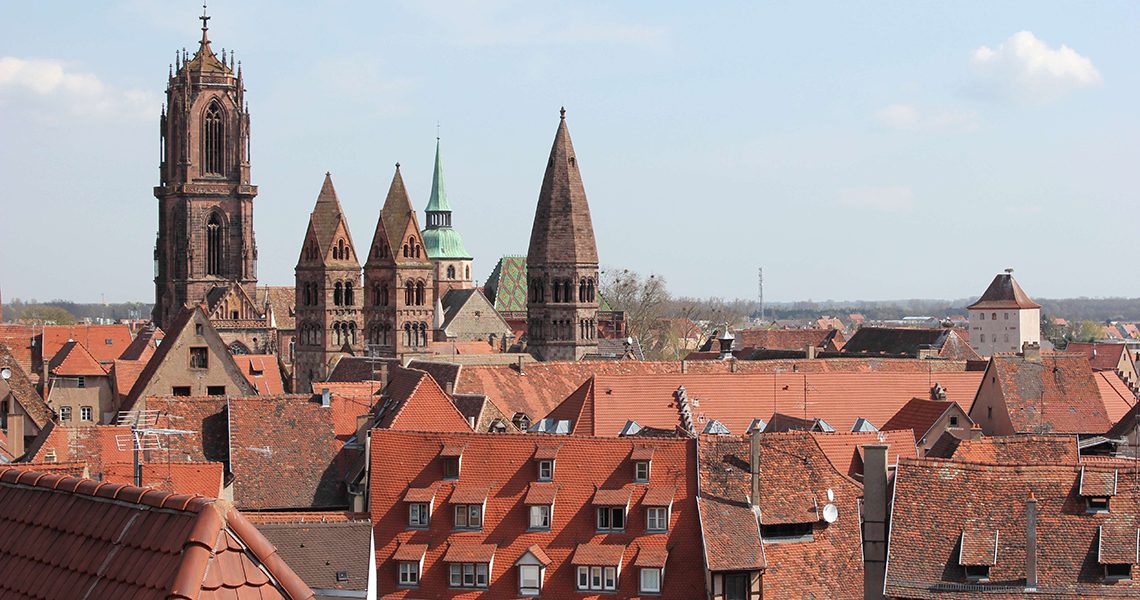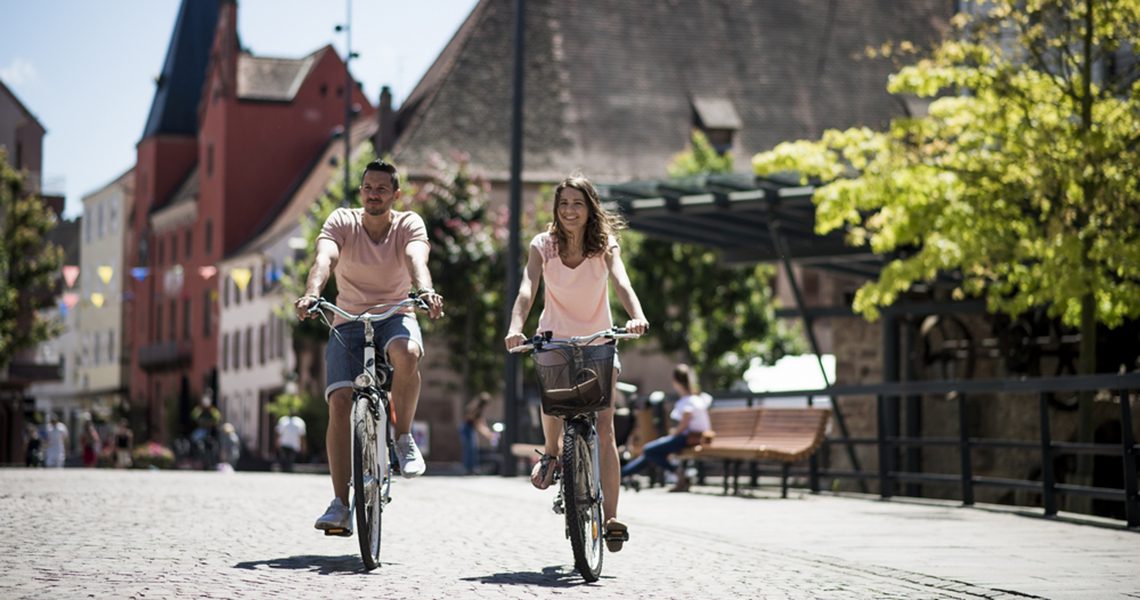The European Route of Judaism on the Rhineland – Wintzanheim
Wintzenheim introduction
Wintzenheim is one of the oldest and most prestigious Jewish communities in rural Alsace. The descendants of the old families are today scattered throughout Europe and in Israel. The rare families who still reside there today, as well as the imposing synagogue where, thanks to the obstinacy and fidelity of the “elders” and their children, the offices of the great feasts and marriages are celebrated, attest of a continuous Jewish presence for centuries. There are also some Hebrew inscriptions engraved above the front door of a house, a ritual bath and above all the vast cemetery which runs along the road leading to Turckheim.
Wintzenheim in detail
In his study on the Jews in medieval Alsace, Gerd Mentgen indicates the presence of Jews in Wintzenheim based on the list of taxes collected in 1499. In the 15th and 16th centuries, the town was divided into two parts: one depended on the imperial provost of Kaysersberg, a lordship of “old Austrian rule”, the other came under the lordship of Hohlandsbourg, which favored the presence of the Jews.
The archives show, of course, the importance from the end of the 15th century of cattle dealers, second-hand dealers and hawkers, even healers, but they mainly mention litigation. They inform us that in 1521, despite the privilege granted to the municipality “not to tolerate the Jews”, the decision of the emperor Charles V to expel all the Jews from the Provost of Kaysersberg was not applied. In 1534 and 1535, however, the two village lords agreed not to admit more than four families to Wintzenheim.
For more information:
http://judaisme.sdv.fr/synagog/hautrhin/rz/wintzenh/esquisse/esquisse.htm

Wintzenheim-Hohlandsbourg 11 (autorisé)
© 2019-Sylvie Petit Photography – ADT – AE.jpg

Montgolfière dans les vignes2
© Benoit FACCHI – ADT.jpg










